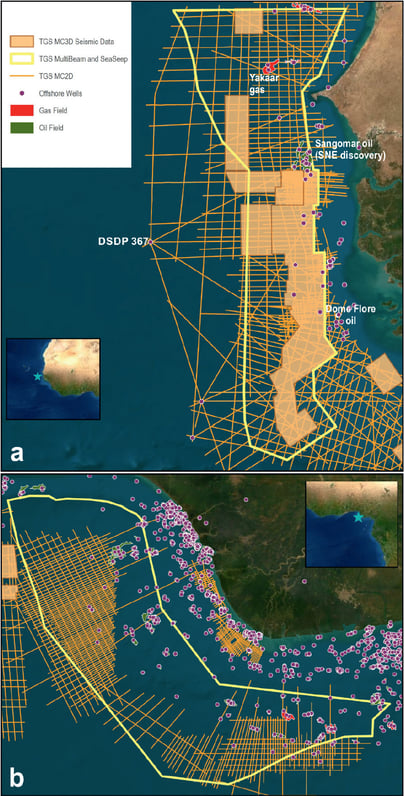First Published: First Break, July 2022
Paolo Esestime and Felicia Winter describe an integrated method to assess marine
hydrocarbon seepage and de-risk the key elements of a petroleum system at both regional and prospect scales.
The successful discovery of commercial volumes of hydrocarbons is strongly dependent on the correct assessment of the subsurface information such as the presence of a source rock, its depositional nature, distribution, and maturity. Understanding how these elements correlate with migration, charge and trapping mechanisms is the second most critical factor to increase confidence in the subsurface model.
State-of-the-art technologies, especially seismic, provide advanced images of the subsurface for more reliable geological models. However hard data is crucial throughout the entire exploration lifecycle as calibrations may remain affected by several assumptions even in mature basins. Well data may be sparse or not representative especially if used in advanced seismic inversion and in the amplitude modelling of direct hydrocarbon
indicators (DHIs). Hydrocarbon seepages have driven historical exploration successes, particularly where the macro-seeps of liquid hydrocarbons are present. In the marine environment, the sampling of hydrocarbon seepage is sometimes overlooked as an
exploration tool, mainly due to difficulties in collecting sediment cores for full geochemical analysis (Abram, 2020).

In this article, we present a two-step method to sample and interpret marine seepage through a systematic seafloor sampling campaign (Figure 1). The most suitable core locations are identified with the help of geophysical data, especially seismic, complemented by a multibeam survey that provides the acoustic properties at the seafloor and in the water column. The objective is to maximize the number of cores with viable presence of hydrocarbons, so-called positive cores, which are then analysed for the much-desired geochemical information.
The multibeam seafloor sampling can be adjusted to match the requirements of the exploration challenges and based on the existing subsurface model to characterize the hydrocarbon families and their correlation with the source rocks. Positive cores, and
those without hydrocarbons, are integrated into the subsurface model to refine the understanding of key factors like migration patterns, trapping mechanisms, and charging scenarios. Lithologies and subsurface temperatures from the cores give additional constraints for the shallow geothermal gradient.
Two case studies are presented in the following, where multibeam and seafloor sampling campaigns (MB&SS) were successfully integrated into the exploration cycle offshore West
Africa: offshore MSGBC (Mauritania, Senegal, The Gambia, Guinea Bissau, and Republic of Guinea), and in deepwater Nigeria.
Multibeam Echosounder for Seafloor Core Sampling of Hydrocarbon Seeps
TGS has combined multibeam and seafloor sampling surveys (MB&SS) to address several challenges of frontier and under-explored basins, from offshore Mexico to the western margins of Africa. These were based on a multi-client business model, to de-risk new and existing plays and to enable the identification of new prospects. The exploration challenges were properly defined with the existing seismic data, both 2D and 3D, to focus the multibeam and coring campaigns...
<continued>
Download the full article using the link at the top of this page.

